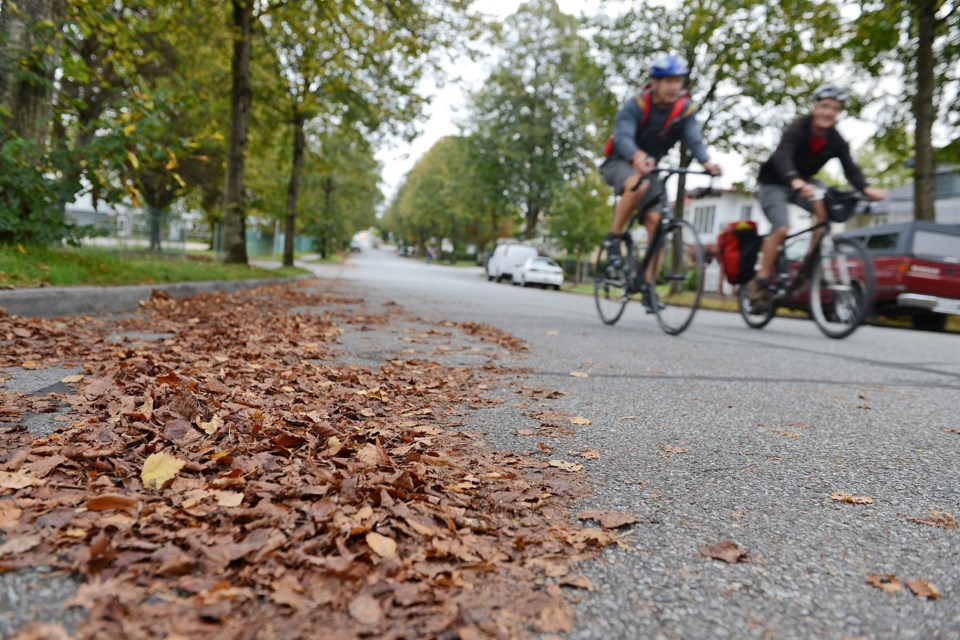It’s that time of year again. With greyer days, early darkness, and roads left slick from fallen leaves and heavy rain, it’s easy for accidents to happen. The coming of fall is always a good time to stop and reflect on ways a cyclist can stay safer on the roads.
Think visibility
Wear bright colours, whether they suit you or not. Fire engine red, neon yellow and vivid orange are all excellent choices. It’s worth investing in a reflective vest or reflective strips for your bike, if not both. Anything that’s more likely to make you stand out to drivers.
Go bright
Lights serve a dual purpose of helping illuminate your own path and making you more visible to other cyclists, motorists and pedestrians. There’s a limit to this — some lights are so dazzling they blind drivers, which is counterproductive — but good front and rear lights, accompanied by helmet lights, are very important.
Setting the rear light to blink makes you more noticeable, and a front light that’s angled down will help you spot changing road conditions and potholes. Look for the lumen rating when you buy the light to get a sense of just how bright it will be.
Respect road rules
This should go without saying, but we all know plenty of cyclists don’t come close to respecting the rules of the road and there are very few of us — myself included — who haven’t cut corners on occasion. Car drivers are just as guilty, whether through inattention or choice.
But if cyclists want to be treated as traffic, as we should be, we have to be prepared to follow the rules that govern traffic and do the best we can to ride safely and predictably.
Running red lights, even if the intersection looks clear, is putting yourself at risk of an accident — and doing no favours to cycling in the long run. The more cars and bikes that follow the rules, the safer roads become for all of us.
Take a closer look
One of the most valuable things I learned when I was taking a motorcycle training course was this: when I wasn’t sure what a car was going to do, I learned to look at the driver.
Someone is turning out of a side street and you’re not sure if he’s seen you? Look at the driver and see if he’s looking your way — if his attention is focused in the other direction, it’s possible you haven’t been seen and it’s worth slowing down or stopping until you’re sure it’s safe to proceed.
Err on the side of caution
Particularly when conditions on the road aren’t that great, it’s always safer to assume the worst. Leaving yourself more time and more room decreases the chance something will go wrong. If something does go wrong, hopefully you have the time and room to react accordingly. This is especially important in the wet, when your brakes might take a little longer to engage.
Don’t park it
It’s great to be able to commute through the winter, but even better to do so safely. The wet weather doesn’t mean parking your bike until March. But good equipment, a sense of responsibility and a little extra caution does a lot to make up for poor road conditions, less daylight and winter weather.
��
Kay Cahill is a cyclist and librarian who believes bikes are for life, not just for commuting. Read more at and reach her at��[email protected].



